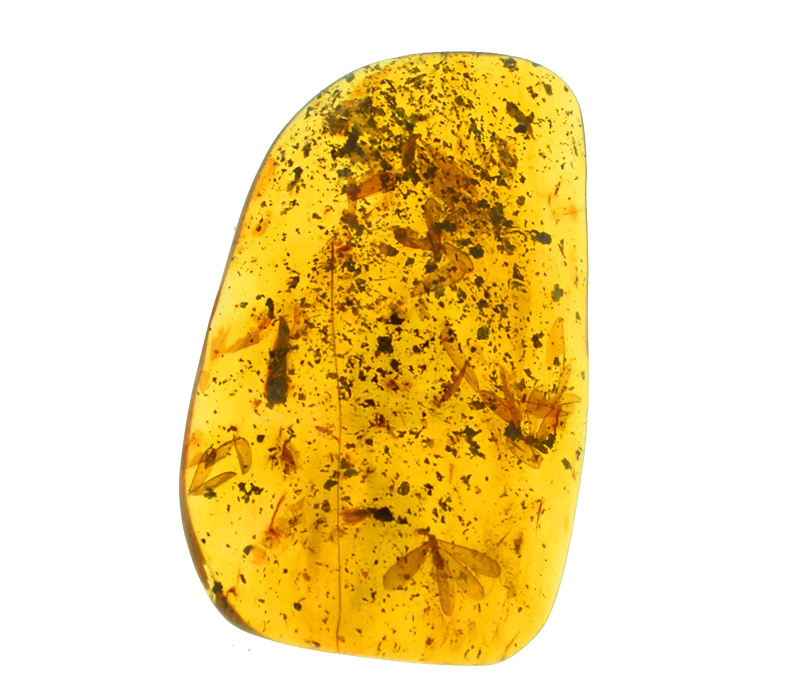GEMSTONE LIBRARY
AMBER
Amber is a fossil resin that ranges from yellow to orange to brown. It often contains plant debris and in some cases insects.
The main amber deposits are found in Poland and Germany (Baltic Sea) and the Dominican Republic. Other deposits have been discovered in many countries.
Each gemstone brought to the laboratory is analysed and identified so that the related report can be drawn up.
CHARACTERISTICS
- Name: Amber
- Mineralogical nature: Biomineralisation
- Colour: Yellow, orange to brown
- Crystal system: Amorphous
- Chemical composition: C
- Causes of colour: Load transfer to long organic molecules
- Physical properties:
- Density: 1.05 to 1.12
- Hardness: 2 to 3
- Cleavage: None
- Fracture: Conchoidal
- Optic sign: Isotrope
- Refractive index: 1.540 to 1.550
- Dispersion: Low
- UVL: Blue, green, yellow or intense white
- UVC: Same as UVL but weaker
- Treatments: Thermal treatment – Pressing
- Syntheses: Verneuil Process (1980) – Beware of imitations
- Geographical origin: Poland, Germany (Baltic Sea), Dominican Republic, Myanmar, etc.




